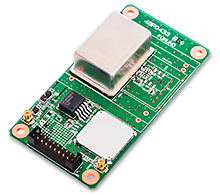Articles for ITS market Trend of EV shift and consumer demands
GM announced their new generation EV platform
General Motors (GM) announced their new generation EV platform on 4th March 2020. They are going to launch their new EV system for all their brands including Chevrolet, Buick, GMC and Cadillac for the 2021 model year. Considering the effect of COVID-19, it may be that their business plan will be affected. Firstly, I would like to highlight GM’s EV strategy.
The next-generation EV platform has a battery pack called "Ultium". "Ultium" consists of pouched lithium-ion batteries manufactured by LG Chem of Korea. A single battery is used as a cell to make a module. The module has a control system to manage the temperature of the cells. Combining these modules, it will be possible to have suitable shapes and proper electric capacity for each model of GM cars.
”Ultium” is a marketing term used by GM, and there would be no big difference from the EV structure used by leading automobile manufactures in the field of EV development.
The feature of “Ultium” is wider coverage of electric capacity. The coverage is from 50kWh to 200kWh of electric capacity. The Smallest one is for the second generation Chevrolet “Bolt EV” and the largest one is likely to be installed on GMC Hummer EV. GM had eliminated the Hummer brand back in 2008 by Lehman Shock. This time, they will revive the Hummer as a vehicle name, not a brand.
Ultra-fast charging with maximum output of 350kW
A feature of GM's EV platform is the quick charging system.
Most of the EVs of GM are charged to maximum voltage of 400V and maximum output of 200kW. Meanwhile full-size pickup trucks such as the GMC Hummer EV are charged to maximum voltage of 800V and maximum output of 350kW with ultra-high-speed charging. To prevent the cable from having high temperature, a water cooling system is adopted. The 800V / 350kW system had been solely used by Porsche “Tycan” but GM’s decision to newly lineup 800V / 350kW could make its commercial availability better.
GM also announced that the price of battery cells is less than $100 per kWh.
Nissan, Volkswagen and others have not disclosed these costs, but it is generally noted that their costs are around $150.
In the first half of the 2010s, when GM started mass production of lithium-ion batteries in cooperation with LG Chem, they announced costs at $350 per kWh. Still, this was accepted as “surprisingly cheap” by people in the industry. The price has fallen to less than one-third in seven to eight years.
However, while exchanging opinions with people in the battery industry, most of the battery manufacturers point out the battery business alone becomes a deficit, this includes LG Chem, except for CATL which has an overwhelming share in China. LG Chem will aim for further mass production effect through their comprehensive cooperation with GM.
Policies first, no consumers
In the decade of 2010, Nissan leaf and Mitsubishi i-MiEV, the first mass product EV by major automobile manufactures appeared in the market. Starting with the Model S, Tesla has developed the luxury market of EV with their own strategy as a pioneer. In 2016, the Volkswagen Group proposed the EV shift in its midterm management plan. In 2019, the Chinese government implemented New Energy Vehicle (NEV) regulation, which is a practical enforcement to sell more EVs.
In the decade of 2020, the entire automotive industry is unlikely to accept the EV shift immediately, even though GM promotes the new EV shift.
The EV has only limited customers for a long period of time, even though the countries and local governments have created policies, giving priority to sales obligations and purchase subsidies. There is no consumer demand for EV, except partial demand including Tesla. GM’s EV shift has been interrupted by COVID-19. It might be used as a reason that the EV shift continues to fail. Currently, it is very difficult to predict the future of EV diffusion in the world market.
Writer introduction

Mr. Kenji Momota Automotive journalist
His major is the world automotive industry and he is also familiar with the energy industry, IT and the aging society problem as the related fields. He acts around the world based in Japan and USA and writes for the general magazines, the technology journals and the automotive related media etc.
He is also commentator of motor race and world's motor show on TV program based on his career of the driver of Indy Racing League and NASCAR. In recent years, he has been covering about a paradigm shift from developed countries to developing countries, the motorized vehicle like EV and the telematics.
FURUNO ITS Journal
Click here for the latest articles after 2022 (in Japanese)2022
- The "realistic" self-driving roadmap shown by the Japanese government and a hands-on report on the latest Subaru EyeSight X
- Will FCVs (Fuel Cell Vehicles) Become Popular? ~New Movement in Toyota and Honda~
- The 'Complete' online sales of new cars start in Japan. Will this new way of buying cars take root?
- Many Firsts! On-Site Report from Tokyo Auto Salon 2022 - The author, who knows what goes on behind the scenes, looks back on 40 years of history. -
2021
- "Moving toward zero traffic fatalities for four-wheeled and two-wheeled vehicles globally in 2050" ~Experience on Honda's latest safety technologies~
- Tsuneishi Shipbuilding's building and DX, an exclusive visit to the main factory
- Japan's Smart City: New Moves toward Practical Use
- When will self-driving buses (service cars) be put to "full-scale" practical use?
- Utilization vehicle data during disasters
- Toyota-led Connected Technology to Transform Commercial Vehicle Business -From light trucks to large trucks and buses-
- Toyota enters the connected car "Personalization" business
- Japanese automakers' carbon-neutral strategies swept up in ESG investment
- Drive experience of the latest autonomous vehicle models and advanced driving support systems
- Will carbon neutrality accelerate the trend to strengthen LCA (Life Cycle Assessment)?
- Semiconductor shortage exposes realities of the automotive industry
- Online Autonomous Driving Contest Enhancing development of Human Resources
2020
- What happens to CASE when gas cars are banned in Japan?
- When will Flying Cars be launched?
- Expectation vs. reality:Autonomous Driving in Japan
- V2X, Becoming increasingly important in autonomous driving
- Technology of Subaru “EyeSight X”
- Lifestyle-oriented French cars gain popularity in Japan
- Human-oriented smart cities are wanted
- MaaS and CASE, how would automotive industry change after COVID-19?
- The beginning of virtualization era, triggered by COVID-19
- Trend of EV shift and consumer demands
- TOYOTA Press conference about ADAS - Releasing algorithm for "sudden acceleration suppression during attempted sudden acceleration" free of charge -
- The Japanese automotive industry in 2020 - 3 turning points -
- "Using a smartphone while driving" and "Level 3 automated driving"
2019
- Motor show business model is at a turning point - Tokyo Motor Show Report -
- Commercialization and monetization of MaaS - ITS World Congress Singapore Report -
- Android Automotive pays attention to V2X - Report from the Frankfurt Motor Show 2019 in Germany -
- Automobile Distribution Revolution and DCM (Data Communication Module)
- Connected business potential and newly proposed "eMaaS" by Honda
- 5G services for practical use are multiplying
- Connectivity technologies attracting attention due to frequent traffic accidents
- Shanghai Motor Show report -SUV, EV, Automated car & 5G-
- Drone Business roadmap and updates to Michibiki (Quasi-Zenith Satellite System)
- MaaS (Mobility as a Service) "town development." Full-scale promotion for a national project
- CES organizer states "Data Period in 2020s." Transformation of the Automotive Industry in CES, US "-CES2019 Report-"
- "Return to Origin" directed towards the age of change, automatic operation and connectivity
2018
- New proposal for Private Car Automated Driving Level and other Hot 5G Technology Topics
- Standardized EV charging infrastructure concerns in Europe, US, Japan and China - Kobe EVS 31 field report -
- Touring a pure car carrier and a test drive of the latest hybrid car
- Planning stage products are exhibited at the newly established visualized mobility service "TOYOTA MOBILITY SHOWROOM".
- Potential “Community Car-share” program promoted by local residents
- CES Asia Report 2108
- Companies attempt new Vehicle-to-Infrastructure communications, including traffic volume measurements and vehicle positioning. -ITS Asia Pacific Forum in Fukuoka-
- Geneva show in Switzerland. Flying cars and MaaS (Mobility as a Service) were hot topics.
- EV (Electric Vehicle) proposals by country
- MaaS competition through service mobilization, M & A and technical field collaboration is accelerating. - The CES 2018 Report -
2017
- Big data’s initiative and fight for the automotive industry. Cooperation among companies becomes increasingly important.
- Connected car and road-to-vehicle communication automatic operation
- ETC (Electronic Toll Collection) and ETC2.0. Current situation and projected future
- Rapid development of sharing economy
- Germany is first to recognize level 3 automated driving
- ITS EU 2017 Field Reports -Automatic Operation and the eCall-
- From Infotainment to ITS, the competitive area is spreading in the car big data industry.
- GTC (GPU Technology Conference) Report and the de facto standardization of AI (artificial intelligence)
- Renesas' new challenge! "e-AI Solution" and "Renesas Autonomy"
- The Automobile industry is shifting from a manufacturing industry to a service industry.
- The movement toward accident countermeasures for aging drivers in Japan
- Fusion of ride sharing and fully automated driving is advancing in the USA.
2016
- Overview of the Quasi-Zenith Satellite System (QZSS) and advancements toward full-scale practical use including the Tokyo Olympic Games - G-space EXPO 2016 report-
- Japan’s automated driving project "SIP-adus" will be a large demonstration experiment.
- The International Home Care & Rehabilitation Exhibition. There were many car manufactures with exhibits booths at this show.
- Japanese car manufacturers starting to concentrate on strengthening the ADAS system
- A new movement of legislation for autonomous cars
- Cyber Security and “AGL”, the new OS for automotive are hot topics in the connected car industry
- “High precision 3D map” the key future of autonomous car and pedestrian dead reckoning
- Chinese “BAT” is accelerating their business in the EV (Electric Vehicle) market
- Tesla's original connection to Taiwan and the new transportation system technologies.
- "The main topic" of the Geneva Motor Show was how to strengthen "pedestrian protection"
- The probe data business is getting more competitive
- Reporting directly from the 2016 CES show "Data services will soon become the main revenue source of automotive industry"
2015
- Do the automated driving systems need the GNSS (Global Navigation Satellite System) ?
- ETC Version 2.0 is coming soon. A new service was announced at the Tokyo Motor Show and the possibility that is could be used as a device for older drivers.
- "Connected Horizon" and "eHorizon". Germany's leading parts supplier accelerates strengthening of "Big Data" for business



 GM showed the new generation EV platform source : HP of General Motors
GM showed the new generation EV platform source : HP of General Motors “Ultium” is GM’s battery pack system source : HP of General Motors
“Ultium” is GM’s battery pack system source : HP of General Motors Lexus’s EV concept car “LF30 Electrified”
Lexus’s EV concept car “LF30 Electrified” Daimler-Benz’s concept car “eQ”
Daimler-Benz’s concept car “eQ” GPS/GNSS Receiver&Chips and Modules (positioning and timing)
GPS/GNSS Receiver&Chips and Modules (positioning and timing)